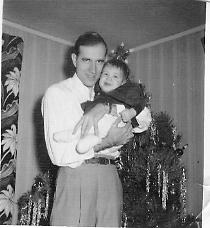
Happy Birthday Dad! He was the second Arthur Mansfield Diamond and would be 100 today.
I think if we adopt the right policies, many of us could live to 100. Too late for Dad, and almost certainly for me.
The first Arthur Mansfield Diamond died in 1933, I think. I was told he played the piano by ear and I saw an article saying that when he was a young man he briefly was a book-keeper for the family vaudeville activities. He looked dapper in a straw hat and knew Knute Rockne of Notre Dame. My Dad was eight when cancer took the first Arthur Mansfield Diamond. My Grandma, with no college degree, raised four children during the Great Depression. Cabbage was nutritious and cheap, so Grandma served a lot of sauerkraut. As an adult Dad hated sauerkraut.
Dad was always reading. He is the only person I ever met who read all three volumes of Solzhenitsyn’s Gulag Archipelago. And he read a conservative reader’s digest weekly (or monthly?) newspaper called Human Events. He was a Republican lawyer in an overwhelmingly Democratic county.
When my brothers and I were young he read aloud to us most of the Oz books, and other books including Atlas Shrugged. Thank you Dad, especially for that.
I wish I had finished my book before he died–he would have read it, argued with me about parts of it, but I think mostly liked it.
Dad was active in Toastmasters, a self-help organization for those who want to improve their public speaking. He rose to become the International President. Their headquarters is near Disneyland. When Dad first joined the Toastmasters board, he spent some time in the park. When he returned from that first trip, I remember his excitement at the then-new attraction, the Tiki Room–seeing what was possible in audio animatronics. Mom and Dad took us to Disneyland and on road trips to most of the U.S.
I remember Dad telling me in his last year that one of his regrets is that he won’t know how things turn out.
Dad was not perfect; neither am I. But I miss him and wish I could still talk with him, and thank him for his wit, his curiosity, and his courage in holding unpopular views when he thought they were right.

